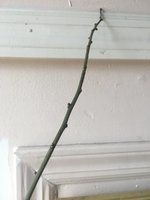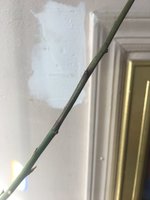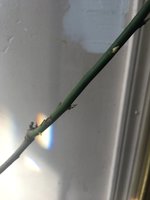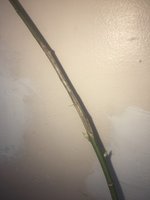Bonds Guy
Mame
So my Prunus mume ‘rosemary’ have some serious dieback, but I’m not sure what caused it. It looks like some time during the winter it tried to exist dormancy, but my other ume tried as well however, there’s no dieback on that one. I sprayed both with fungicide at least 3 times throughout the winter so I assume it wasn’t a fungal issue. One key difference is this mume is have about 2 inches of exposed cambium (I forgot to take a picture of that area) so perhaps that caused the dieback?







